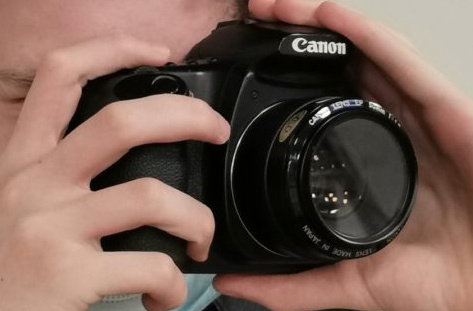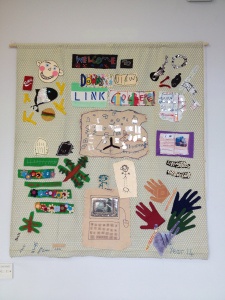
How Many Words is a Photo Worth?
BY: Guest Writer
19 Aug 2024
On the blog this week, Melanie Jones a teacher at Treasure House (London) CiC shares with us how they use photography as a way of enabling young people who experience barriers to communication to communicate. Treasure House is a specialist education provision, highly experienced in working with young people with anxiety and other emotional barriers, autism, dyslexia and school phobia. They aim to provide a warm, supportive and caring environment in which students, who have previously experienced difficulties, are able to flourish.
1000 words is a lot. Or maybe it isn’t very many at all. I suppose it depends on your perspective. If you’re a young person who doesn’t speak, 1000 words may feel overwhelming. An impossibility. So if a photograph could say ten words – ‘I would like to be a part of this group.’ – or five words – ‘Here is what I think.’ — or even just one – ‘Smile!’ – then it becomes an invaluable tool, not just for artistic expression, but for engaging with peers and establishing a role within a group.
I will try not to talk too much about myself. In brief, I have never officially been diagnosed with selective mutism, but from the ages of 11 to 14, I did not speak at school, only at home (where I was obnoxiously loud). My teachers told my parents I was silent; my parents found this hard to believe. Nobody intervened. It was the 80s. Over time, my silence improved somewhat; I went to college, university, studied photography, made friends (but not many). Until I somehow, accidentally, got a job as a nightclub photographer. I had to say ‘Get together. Smile, that’s it. Everybody look this way!’ approximately 300 times a night, and my obnoxious loudness finally made its way out into the world.

The school I teach at, Treasure House, has only 15 students on roll and they all struggle with anxiety. Many of our students also have a diagnosis of autism, ADHD or selective mutism. When I began teaching photography in this setting, I could see the potential for students to express themselves through art. Students focus on projects that engage with mental health, trauma, the area that they live in, mortality, and their many views and opinions about the world. What I hadn’t anticipated was the way students who had been socially isolated could use the camera – in the same way that I had 15 years earlier – as a way to break through that isolation.
I’d like to tell you about two students. The first struggled with extreme anxiety and did not feel able to make friends at school. When discussing ideas for her Gold Unit 2 Leadership Project, it became apparent that this would be difficult. She could not imagine communicating with other students at all, let alone engaging them in arts activities. It wasn’t that she refused, it was that it was impossible for her. Eventually, we decided that she would organise and run a photography competition for the school. She researched local photographers to identify a judge, gave students a survey to identify a suitable prize, and organised all aspects of the competition from submission to prizegiving. I had thought that this would allow her to run the project without having to speak to her peers. But as she carried out the project, the other students were interested, they approached her, they asked her for tips. The competition gave everyone the language that they needed to communicate.
My second student, also a talented photographer, has a diagnosis of autism, selective mutism, and ADHD. At school, she primarily communicated with one or two adults and did not speak in public spaces. While working on her Gold Arts Award, this student began moving (unprompted) around the school taking photographs of the staff and students she encountered. The camera became a catalyst for speech. Holding up a camera asks a question – ‘Can I take your photograph?’ Once a photograph has been taken, the subject may wish to see it. This again can be a non-verbal exchange. The subject may compliment the photographer or ask them to take the photograph again. Seeing how the camera allowed this student to interact and engage, the school offered her the role of taking photographs on school trips. By choosing what and who to photograph on these trips, she was able to communicate her experiences to us and to become an integral part of the trip that others remembered. At her leavers party, often a stressful experience for students who are leaving an intensely supportive environment, she helped to set up a photo booth and took official leavers portraits. This became her way of saying goodbye.

I have only mentioned two students here. I have many more positive stories I could have told, and some negative ones too (photography isn’t for everyone!). As arts practitioners, we might say that the value of an image is in its artistic merit or in the skills and techniques used to produce it. We might highlight the way an image allows a person to express complex emotions, or discuss the way that art can bring communities together, or be therapeutic. I hope that this blog post shows that a picture can also be worth a single, but vital, word – ‘Hello!’
Photos by Treasure House London:
Top: student holding a camera
Bottom: Photobooth set up for leavers party
Related posts
BY: Guest Writer
BY: Alan Lynch


.png)

Comments & Replies